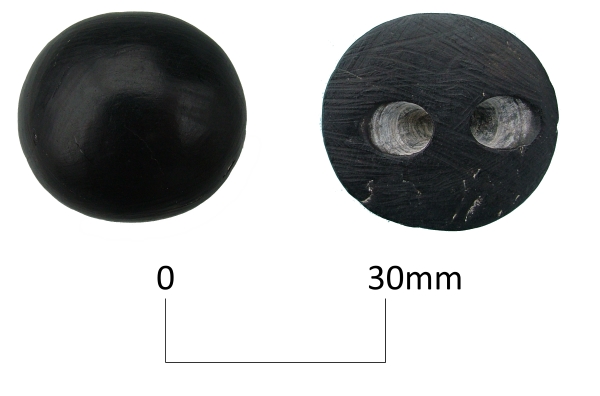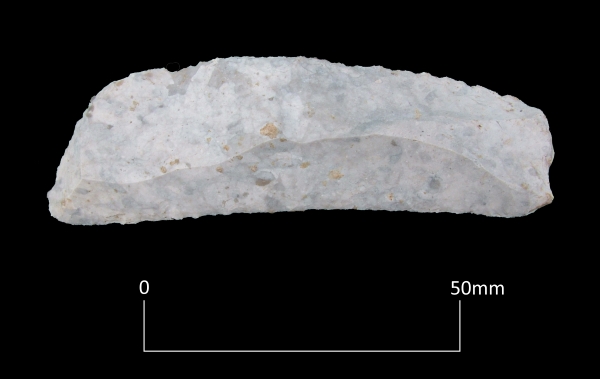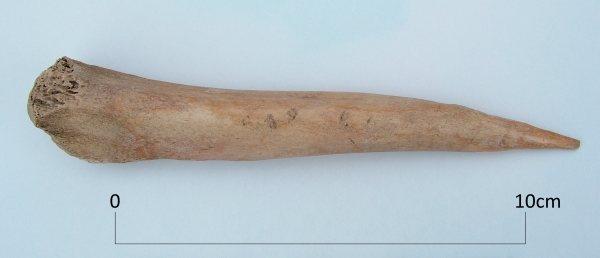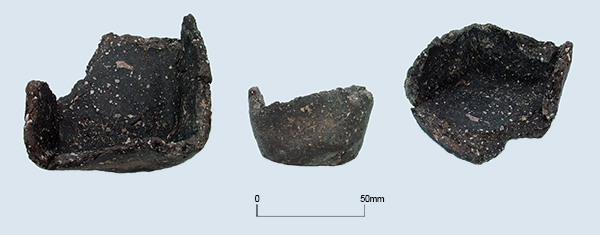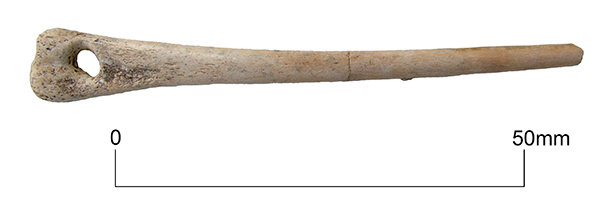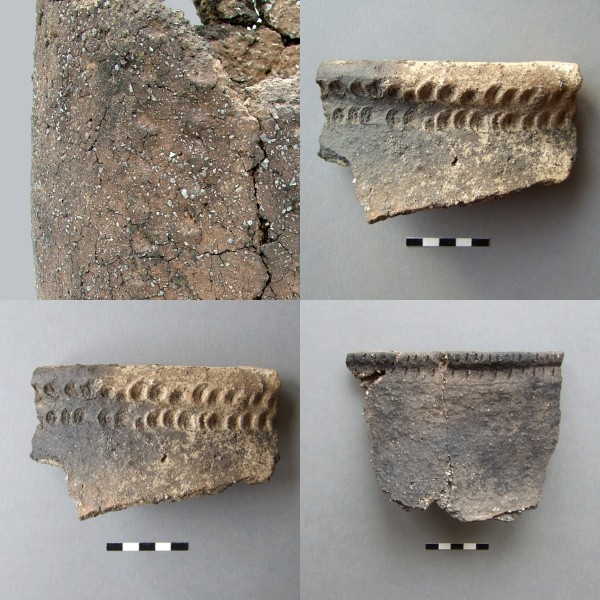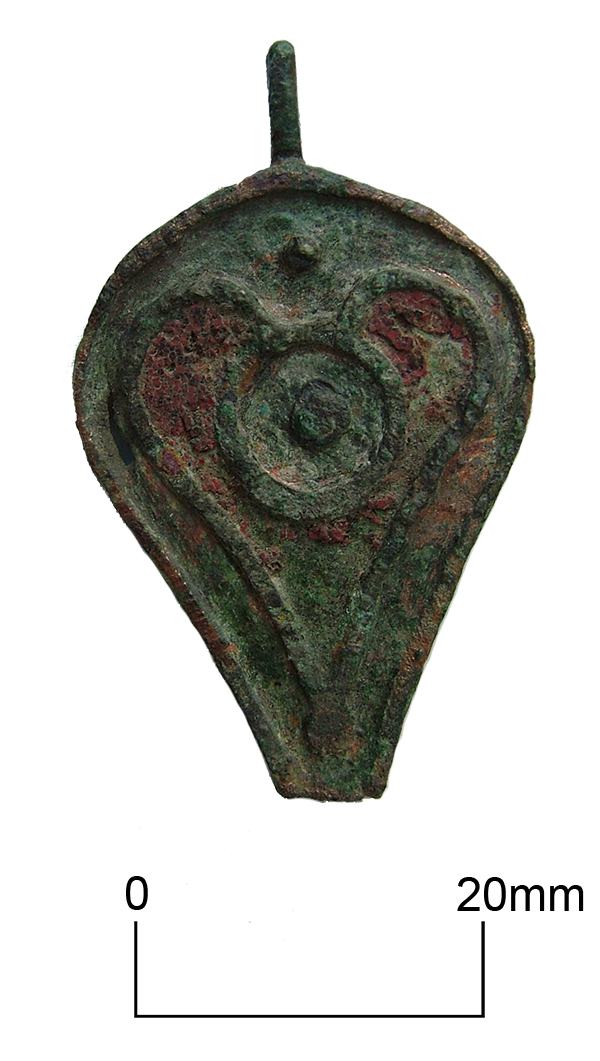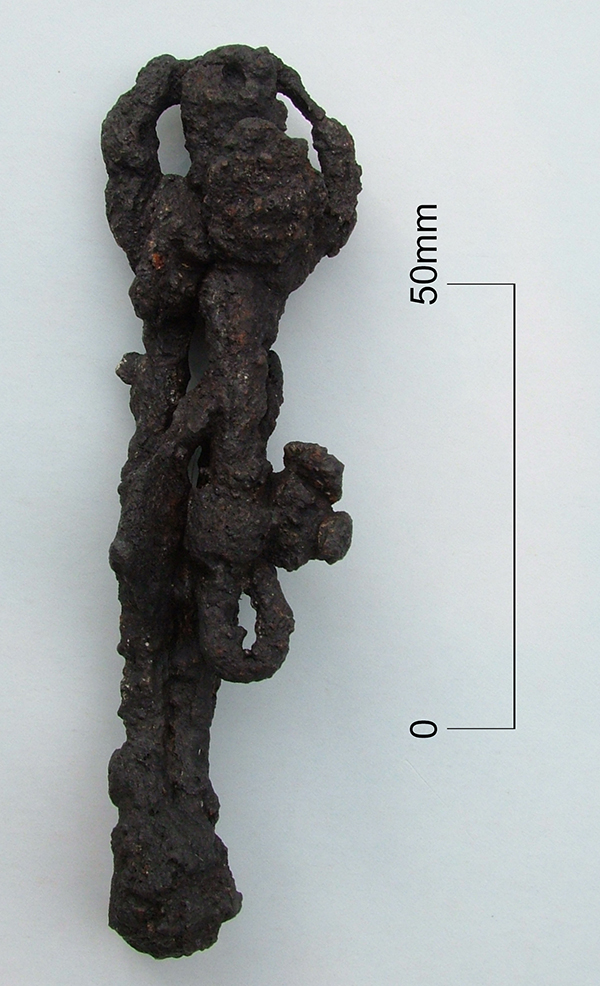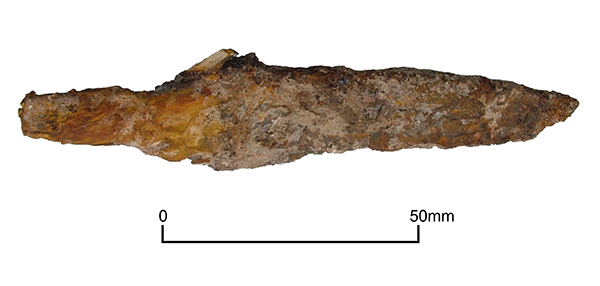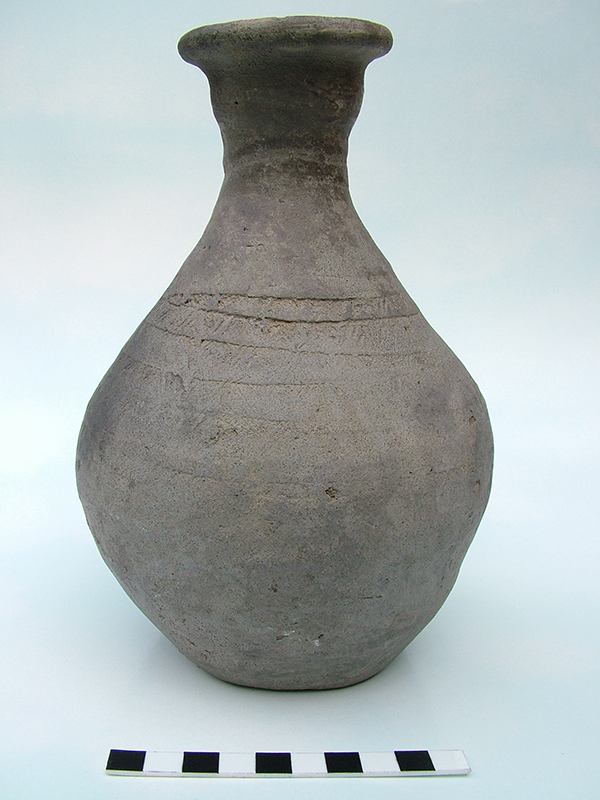
For Day 153 of the VM_365 project our image shows an Anglo Saxon ceramic bottle vase, excavated in 1990 from Grave 277 at the Anglo-Saxon cemetery at Sarre, the iron châtelaine ring and keys shown in yesterday’s post came from the same grave.
The bottle vase shown here is wheel turned in a smooth grey fabric and has been decorated with a lightly impressed rouletted chevron design. Fourteen similar vessels were excavated from graves in the same cemetery by John Brent in 1862.
Vessels of this type were manufactured on the continent by the people of the Frankish Kingdom, who also used them as grave goods. Examples from east Kent; other cemeteries in Thanet and graves from the Sarre cemetery are known to have been continental imports, considered by archaeologists to be luxury items. The decoration on the vessel from Sarre shown here is similar to, although slightly more complex, than an example found in grave 156 at Buckland Anglo-Saxon cemetery near Dover.
The vessel shown today has been carelessly cut from the potters wheel with wire so that it does not stand straight. It has been considered unlikely that a ‘second’ like this would have been included in a shipment of luxury goods from the continent.
It has been suggested that because of the inferior execution of the manufacture of the vessel, it may have been the product of a less able local Anglo-Saxon potter rather than a continental Frankish import. This idea perhaps underestimates several aspects of human nature that may have been at play in production, trade and consumption in Anglo-Saxon society.
